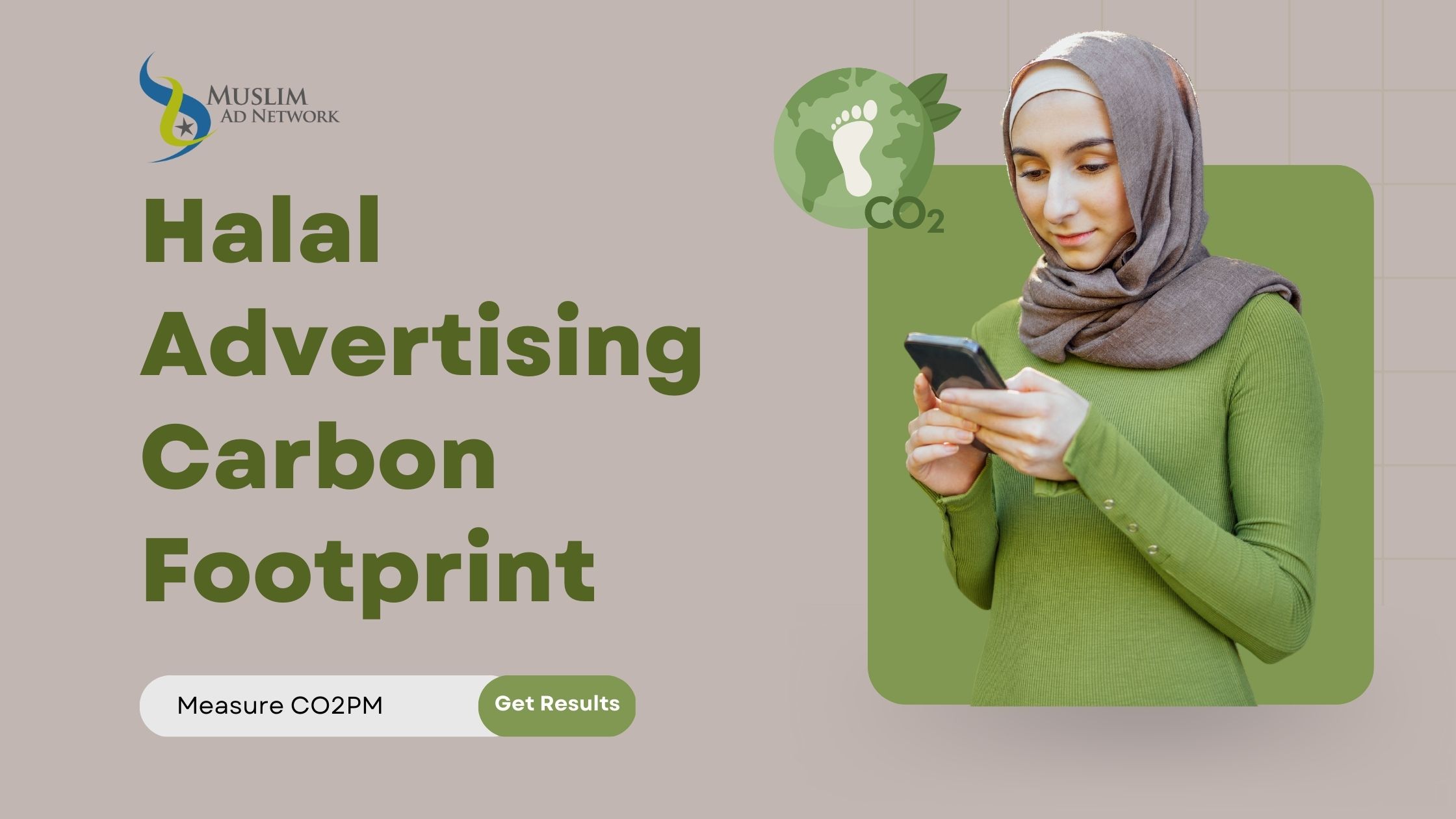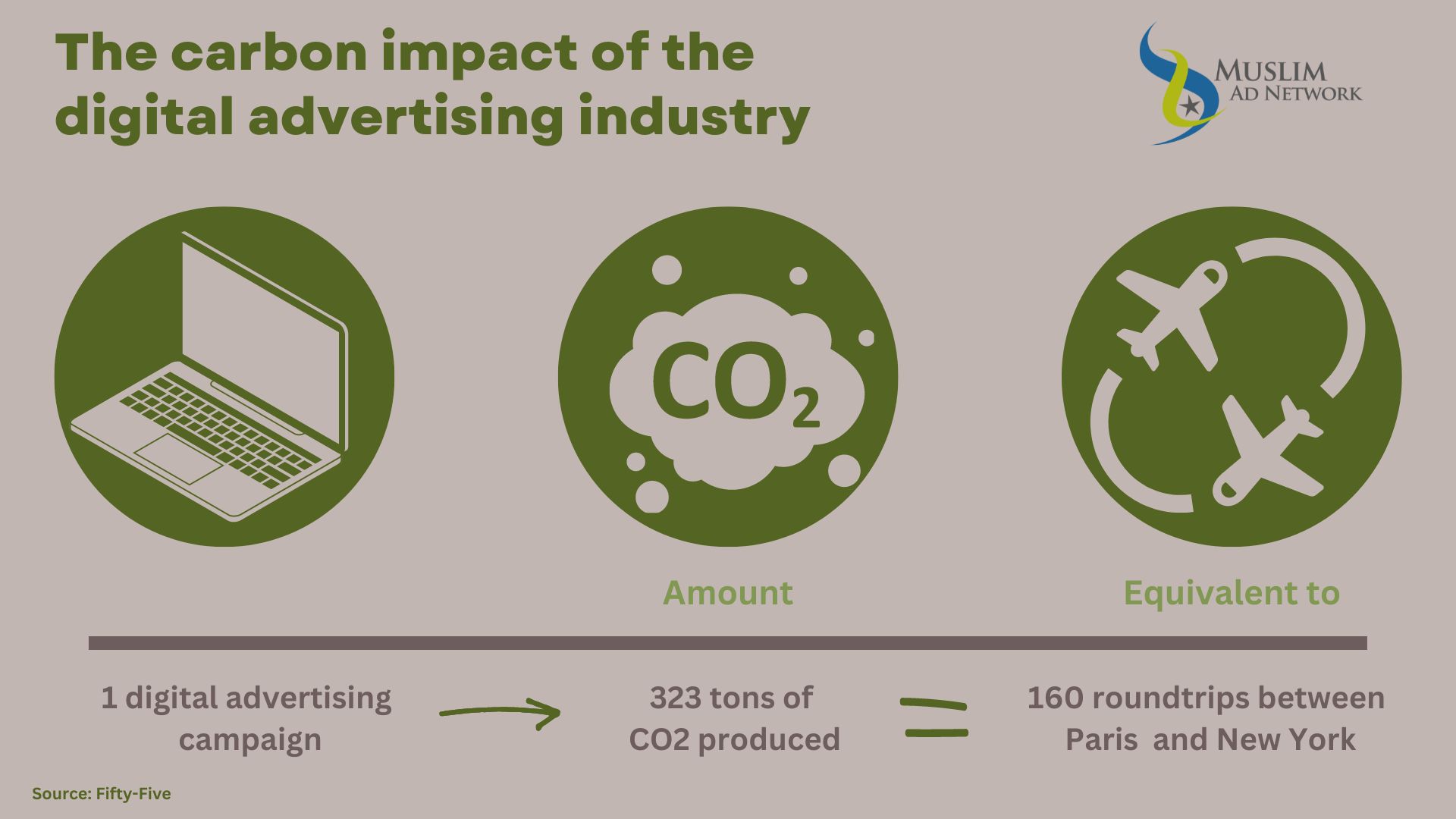
With the advent of digital advertising, marketers were given a once-in-a-lifetime opportunity to improve their environmental performance. Unlike print advertising, your digital advertising does not require any raw materials. Among many things, your halal ads do not necessitate cutting down trees to create paper or pumping hydrocarbons from the earth’s crust to make the ink. However, as the saying goes, too much of a good thing is poison. As the digital advertising industry matures, we are starting to understand its environmental costs. According to a study, digital advertising contributes 3.5% of global greenhouse gas emissions, with this figure increasing by 6% year on year.
Islam and the Environment
One of the most important things in a Muslim’s life is not going about business as usual while being ignorant of his or her Creator’s rules and regulations. This is true for all his or her actions, including the business they run, and that would include how he or she advertises and promotes his or her products or services.
Source: “What You Must Know About Islamic Advertising Principles”
The Concept of Israaf
While the world is waking up today to the concept of reducing waste and saving the environment, Islam advocated this concept thousands of years ago by telling us to use only what we need and not to consume wastefully.
But waste not by excess: for Allah loveth not the wasters.
Source: Quran 6:141
When it comes to the idea of waste (Israaf), which is frequently mentioned in the Quran, there are no ambiguities. We are exhorted to use only what we require, to abstain from gluttony, and to care for our home. That much is obvious: it is always unacceptable. Even when resources are abundant.
Abdullah ibn Amr (a companion of the Prophet Muhammad [Peace Be Upon Him]) reported: The Messenger of Allah, peace, and blessings be upon him, passed by Sa’d while he was performing ablution. The Prophet said, “What is this extravagance?” Sa’d said, “Is there extravagance with water in ablution?” The Prophet said, “Yes, even if you were on the banks of a flowing river.”
Source: Musnad Aḥmad 7065
The Concept of Khalafah
According to Islamic law, the fundamental elements of nature—land, water, fire, forest, and light—belong to all living things, not just humans. The Quran and Hadith serve as a beacon for promoting global sustainable development. Humans must refrain from causing havoc and wasting resources because these actions are harmful to the environment.
Mankind was given the right to exploit natural resources under guardianship (khalafah), which means being granted the right to use someone else’s property with the understanding that it will not be harmed or destroyed.
This shows how our responsibilities as Muslims and inhabitants of this beautiful planet are very clear. However, not all waste ends up in the rotting trash can. A wasteful lifestyle can increase the number of resources we consume in all aspects of our lives, such as eating, dressing, traveling, and, as a halal brand, our digital advertising footprint.
He raised the heaven and established the balance so that you would not transgress the balance. Give just weight – do not skimp in the balance. He laid out the earth for all living creatures.
Source: Quran 55: 7-10
The Islamic Declaration on Global Climate Change
The Islamic world issued a historic declaration in order to pave the way for a comprehensive treaty in Paris, in 2015. The declaration calls on the world’s 1.6 billion Muslims to contribute to the reduction of harmful greenhouse gas emissions and the adoption of renewable energy sources. A section of the declaration among many other things states:
…we affirm that our responsibility as Muslims is to act according to the example of the Prophet Muhammad (God’s peace and blessings be upon him) who – Established protected areas (himas) for the conservation and sustainable use of rangelands, plant cover, and wildlife…Renewed and recycled his meager possessions by repairing or giving them away…
Source: “The Islamic Declaration on Global Climate Change”
Digital Advertising Carbon Emissions
A typical digital ad campaign for one advertiser generates 323 tons of carbon dioxide, the equivalent of 160 round-trip flights between Paris and New York, according to a recent estimate from the marketing company Fifty-Five. This campaign typically involves shooting, editing, serving, and measuring video, social, display, and search ads. Thousands of servers start operating as a result, using electricity to power each ad call.

In a study conducted by investment analysis firm Ebiquity and emissions measurement company Scope3 in 2022, the cost of excessive supply chain waste in digital advertising and its effects on the environment were revealed.
The study examined more than $US375 million in digital advertising spend from 43 brand advertisers across 116 billion display ad impressions. It was concluded that 15.3% of advertising spend is wasted on inventory that has no value while emitting excessive amounts of CO2.
The Carbon Dioxide Miscible Flooding Predictive Model (CO2PM) provides information on the sustainability of the media plan and shows the emissions caused per 1000 contacts in kilograms. CO2PM can be used as a sustainable media KPI to help the communications industry achieve climate neutrality.
“We believe CO2PM should be adopted immediately as a core metric to influence decision-making and lead technology and media partners to optimize for sustainability.” – Nick Waters, Group CEO at Ebiquity Plc
Some of the key findings of the study include:
- Carbon emissions of websites vary dramatically with CO2PM per website.
- The global weighted average of digital ad emissions is 670g CO2PM per 116 billion ad impressions, which is equivalent to flying 1.35 million passengers from London to Paris.
- Made for Advertising (MFA) websites’ wastage is 26.4% higher than other websites.
How Your Halal Advertising Can Improve Its Carbon Footprint
Measure and Consider
The first step is to begin the measurement process. Use a measurement tool that can identify the situations that cause high carbon emissions.
The next step is to look at which publisher properties that you work with emit the most carbon emissions. A website with a large number of ads or an MFA website that has a slow load time will almost certainly leave a larger carbon footprint.
For your halal advertising, you can begin to consider the carbon footprint when making decisions and placing bids, and you can begin bidding less when the supplier has a high carbon footprint.
AI and Programmatic
Artificial Intelligence (AI) can help you reduce ad campaign ‘wastage’ by not serving digital ads to people who are unlikely to convert. AI is advantageous because it constantly adapts to avoid irrelevant targets and reallocates budgets in real-time to achieve waste-free campaigns. It is estimated that around 40% of programmatic ad spend in the UK is driven by algorithmic decision-making or artificial intelligence.
Here is how AI and programmatic can help you reduce ad wastage for your halal brand according to Adext AI:
- Using the programmatic advertising and AI combination, you can quickly learn the price that all ad networks are willing to pay for an impression. You can be certain that you’re always getting the best deal and managing your money wisely.
- You can see the probability that an impression will lead to a conversion. The choice to wager on that likelihood is then entirely up to you.
Short and Light
- Reduce travel-related carbon emissions by localizing ad production closer to the team’s location.
- Produce short video ads rather than long ones. In general, the shorter the video, the lighter the file, and the less server load required for delivery and streaming.
- Reduce the size of image ads. Similarly to video ads, the lighter the image file, the fewer CO2 emissions it emits.
- Repurpose existing media creatives by tweaking old video and image ads rather than always creating new ones.
- Schedule your halal ads to run during off-peak hours to balance off-peak server load, which usually necessitates more power consumption and higher CO2 emissions.
- Work with experts in the field of halal advertising to make sure your ads reach Muslim consumers efficiently.
Conclusion
Initiative is extremely important. There aren’t many global benchmarks and standards for marketers to follow when it comes to reducing the carbon footprint of your halal brand’s digital advertising, so it is up to you to ensure this forms a key part of your marketing ethos.
True change may require industry-wide collaboration, but that doesn’t mean that you can’t start to do your bit. By evaluating your advertising channels and the marketing strategies behind your halal brand’s digital campaigns, you can start to measure your carbon footprint and start to allocate your media spending in a more eco-friendly way.
By adopting more sustainable practices and technologies, you can make the progress your business needs to contribute to the bigger picture of effective carbon footprint reduction.
start targeting muslim consumers